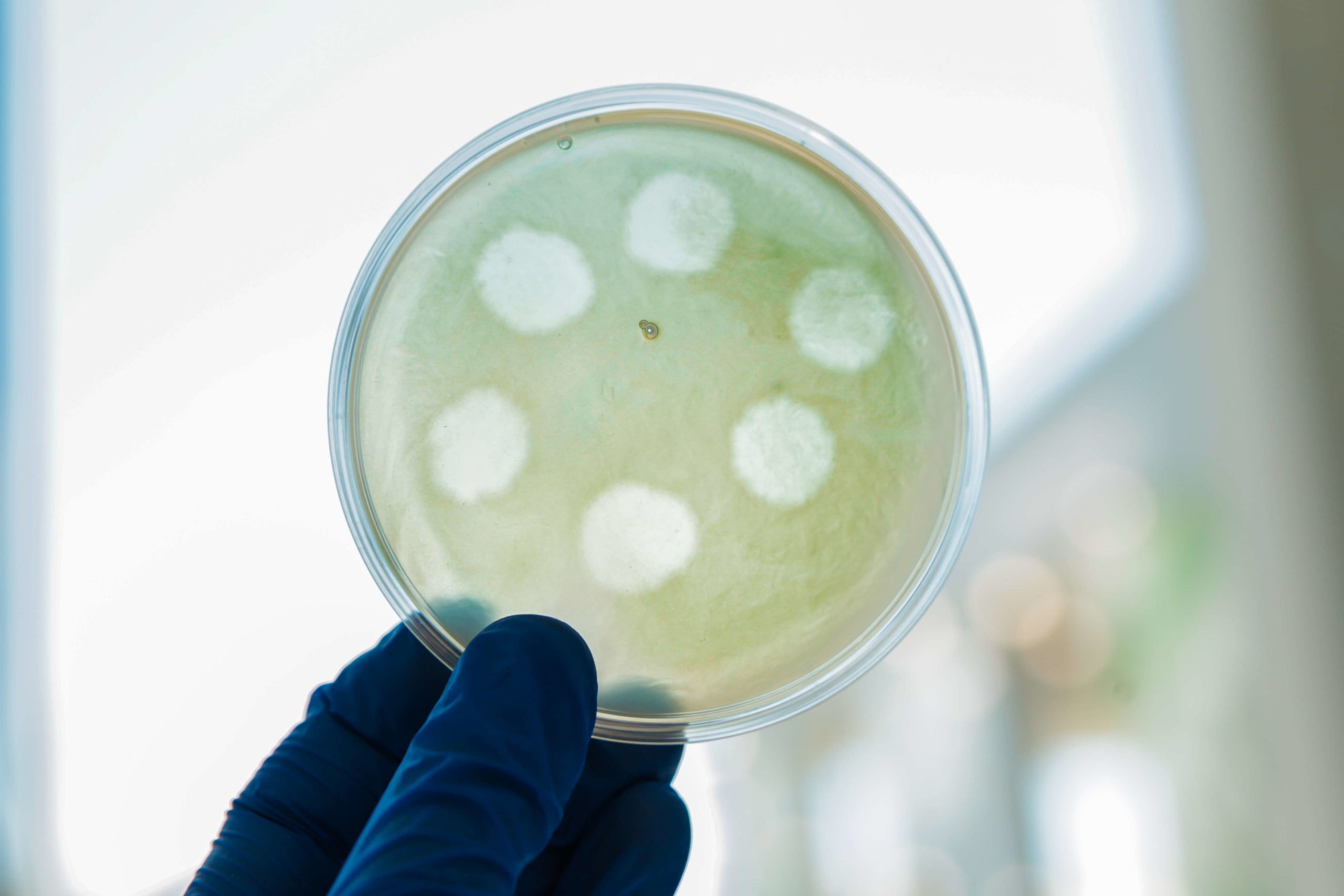Controlling Fire Blight with Bacteriophages, Soon a Reality

Fire blight, a plant disease so difficult to control, prevent and eradicate that no chemical treatments are available for it yet.
The disease is caused by Erwinia amylovora (Ea), a bacterium that mostly affects plants of the Rosaceae family, and we, at Kimitec, know how problematic this pathogen may become for pome fruit growers.
We specialize in natural, biotechnology-based solutions for agriculture, and we are currently working on PhageFire, a phage-based biopesticide capable of eliminating Ea in a natural, effective and sustainable way.
Do you want to know how phages can defeat Erwinia amylovora? Then keep reading and find out!
Phages and their life cycle
Present naturally in the environment, and neither alive nor inert, they are invisible to the naked eye (and even with conventional microscopes!) because of their small size, even though they are considered the most abundant organisms on Earth.
No, it’s not a riddle. We are talking about bacteriophages, aka “phages” or “viruses of bacteria”, which have the ability to infect bacteria, reproduce inside them, and then destroy them.
They are already used in the field of medicine, and are considered of great value because they can be applied against multidrug-resistant bacteria, which represent an increasingly frequent problem due to the misuse of antibiotics. And now, experts are evaluating their potential application for the control of phytopathogenic bacterial diseases (those affecting plants), such as fire blight.
But before analyzing their benefits for the agricultural industry, we must understand how they behave.
Phages behave like any other virus: To reproduce, they need a host cell to infect. Their mode of action is called bacteriolysis, which implies the destruction of the host bacterial cell after its colonization.
The lytic cycle is the process through which phages complete their life cycle, and the infection of a host cell. The cycle is divided in several phases:
- Firstly, phages attach themselves to the host cell, beginning the codification process of their genetic material and injecting instructions that will alter or destroy the bacterium’s cell wall.
- Phages copy their own DNA inside the bacterium, and start reproducing through a self-replication process.
- The resulting infectious particles assemble, creating new phages.
- The cycle ends with lysis itself; i.e., the host cell explodes (lyses) and dies after allowing the reproduction of multiple phages.
Once the process is complete and the new phages are released, they go in search of new bacterial cells to use as hosts, and repeat the cycle. Thus, phages multiply exponentially, hence their strength.
A distinctive characteristic of phages is their specialization: They affect specific bacteria depending on their type. This means we can use them knowing that they will ignore desired strains, and directly attack only those unwanted.
Benefits of bacteriophages in agriculture
Today, the agricultural sector is looking for a way to replace chemicals with more natural products, and thus offer healthier food. Luckily, thanks to the current advances in the field of biotechnology, we can already develop high-quality, effective, natural products that bring us closer to that goal.
And here comes our proposal: We believe that phages may be a sustainable strategy to reduce the use of chemical pesticides in the agrifood industry. One of their advantages is that, when the target pest’s survival is threatened by their lytic cycle, certain phages release chemical signals that start a different cycle called the lysogenic cycle, which allows phage replication without killing the host bacterium. As a result, host cells are kept alive until the phages have a chance to replicate.
We think that the use of phages for the control of pests, such as fire blight (FB), provides a series of benefits. For example:
Specific mode and site of action
They only affect specific bacterial strains, leaving other types that may be beneficial to our crops unharmed. Furthermore, phages only replicate at the site of infection, until their host bacteria are completely eliminated.
They are harmless
Phages are not toxic to eukaryotic cells, that is, cells that contain a nucleus like animal and plant cells. Therefore, they do not affect humans, animals or the environment.
They do not generate resistance
Unlike antibiotics and their associated problems, phages evolve, adapt, and they rarely generate resistance.
Residues? No thanks!
Phages do not leave residues and are, therefore, an eco-friendly alternative. When target bacteria disappear, the lytic cycle stops, they cannot reproduce, and they die.
Adaptability
Phages can be used alone or combined to treat ongoing infections, i.e. they offer great adaptability depending on crop needs.
Tiny investment, great results
They self-replicate naturally. Once the lytic cycle is finished, new phages are released. These will infect the remaining bacteria and start new cycles. This means that, with a reduced number of phages, we may achieve great results in a short period of time.
Affordable and easy to produce
Phages can be easily isolated, produced and stored.
What is fire blight and how does it affect plants?
Fire blight is a quarantine pest, and quarantine pests usually have a huge economic and environmental impact in the corresponding affected areas. Because of that, they normally fall under the responsibility of the relevant authorities.

Fire blight (FB) is caused by the bacterium Erwinia amylovora (EA), whose origin can be traced to the United States, although it has been present in Europe since the fifties. As stated before, it mainly affects crops from the Rosaceae family (pome fruits such as pears, apples, quinces or loquats), and it can be lethal, leading to plant death in a very short period of time.
Unlike antibiotics, resistance to phages in natural populations of Erwinia amylovora is very rare. Because of that, and because they mutate and replicate much faster than their host bacteria, phage cocktails for pest treatment are usually very effective.
An integrated phage-based solution for Ea is urgently needed. Once it is available, growers will be able to effectively control infections with this pathogen, and reduce their reliance on harmful chemicals and antibiotics.
With the PhageFire project, Kimitec aims to find that solution: A phage-based (bio)pesticide containing only natural plant substances, microorganisms, or other components they secrete. This will be the first and only solution of its kind in Europe, and it may be potentially repurposed against other plant diseases.
PhageFire, a natural, phage-based product against fire blight
PhageFire is a H2020 project funded by the European Union, and it is aimed to develop a natural, rapid and effective phage-based product against the fire blight disease caused by Erwinia amylovora.
Several partners participate in the project: The association Peras del Rincón de Soto, from La Rioja; the consultancy company Enviroinvest from Hungary, experts in production, authorization and commercialization of phage-based pesticides; ZHAW (Switzerland), a top research center in phage therapy, and Kimitec, specialist in the design, development and commercialization of natural solutions for agriculture.
Important scientific and technological progress has been made in the use of phages for the control of Erwinia amylovora in plant models: Kimitec and its partners already have a library of Ea-specific lytic phages that have been naturally isolated.
Our role in this H2020 project is to scale up the phage-based solution developed by Enviroinvest and ZHAW, ensuring its homogeneity and stability. And when we reach success, pome fruit and Rosaceae plants producers such as Peras del Rincón de Soto (our collaborators in field trials) will gain full control over this dreadful fire blight pest.
Our PhageFire solution will be effective against a wide range of Ea strains, as well as safe, affordable, easy to manage, persistent, and environmentally friendly. It will help you reduce your economic losses due to this disease, and ensure full natural productivity while reducing your dependence on synthetic or toxic chemicals.
We are now optimizing production on an industrial scale… but, we couldn’t wait to make you a part of this revolution!
